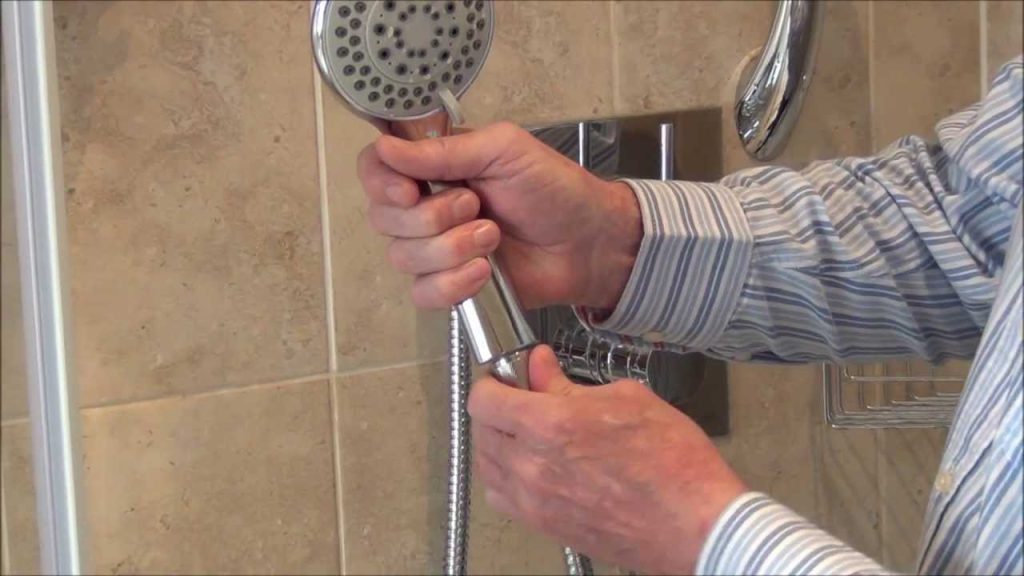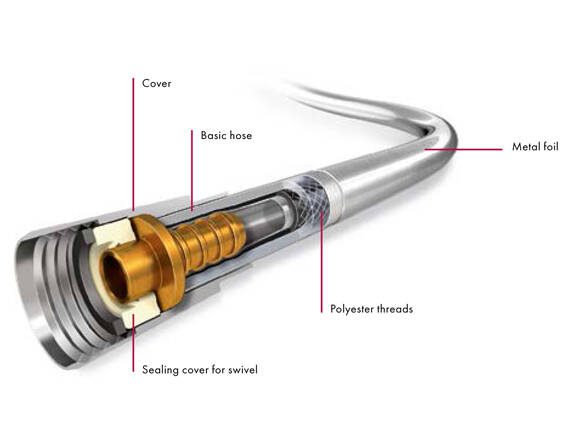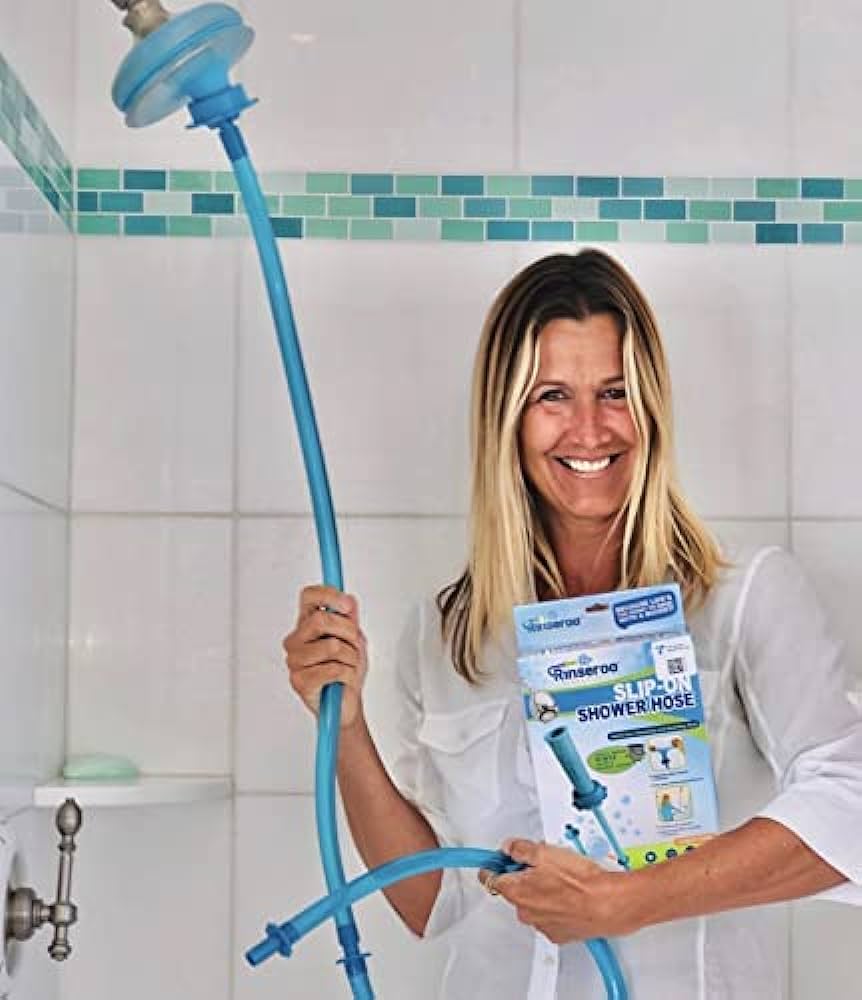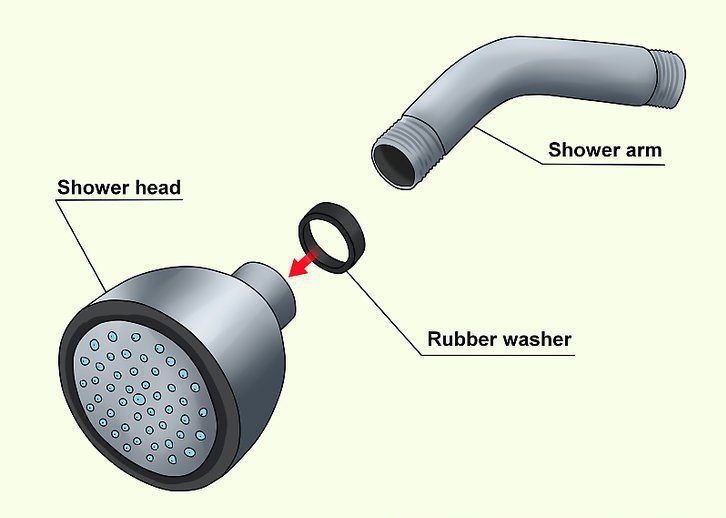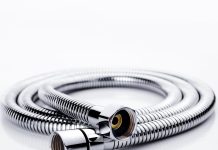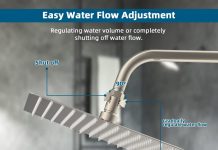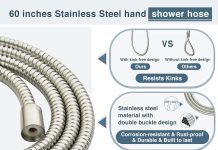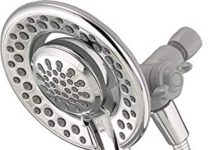Curious about which end of the shower hose attaches to the shower head? Don’t worry. We’ve got you covered.
In this article, we’ll unveil the answer to this age-old question, providing you with the knowledge to set up your shower without any confusion confidently.
Prepare to bid farewell to any uncertainty as we reveal the secret behind properly connecting your shower hose to the head.
This image is the property of i.ytimg.com.
Table of Contents
Determining the Correct End
When connecting a shower hose to a shower head, it’s essential to determine the correct end for a secure and efficient installation. Thankfully, this process involves checking the hose fittings, observing the hose lengths, and inspecting the hose labels.
Checking the Hose Fittings
Examining the hose fittings is one of the first steps in determining the correct end of a shower hose. Typically, shower hoses have two different fittings: one that attaches to the shower head and another that connects to the water source. To identify the correct end, look for any indicators or markings on the fittings that may indicate which end goes where. Some shower hoses come with specialized fittings that only fit a specific type of shower head, so it’s crucial to double-check this before proceeding with the installation.
Observing the Hose Lengths
In addition to checking the fittings, observing the hose lengths can also help determine the correct end of the shower hose. Typically, the end with the longer hose length is designed to attach to the shower head, while the shorter end connects to the water source. This is because the shower head is usually positioned higher than the water source, and a longer hose allows for easier maneuverability and reach.
Inspecting the Hose Labels
Another helpful tip for determining the correct end of a shower hose is to inspect the hose labels. Manufacturers often include labels or decals on the shower hose indicating which end attaches to the head.
These labels may include arrows, icons, or written instructions that indicate the correct installation orientation. Inspecting and following these labels can ensure a hassle-free and correct connection between the shower hose and the shower head.
Different Types of Shower Hoses
Before we delve further into the installation process, we must familiarize ourselves with the available shower hoses. Understanding the various options can help us choose the most suitable one for our needs and preferences.
Metal Shower Hoses
Metal shower hoses are popular due to their durability and sleek appearance. Typically made from stainless steel, these hoses resist rust and corrosion, ensuring a long lifespan. Metal shower hoses are also known for their high pressure and flexibility, making them ideal for households with ample water pressure. They often come with various finishes, such as chrome or brushed nickel, to match the shower head style and bathroom decor.
Plastic Shower Hoses
As the name suggests, plastic shower hoses are made from plastic materials such as PVC. These hoses are lightweight and affordable, making them a budget-friendly option for homeowners. Plastic shower hoses come in various colors and designs, allowing for customization and personalization. However, they may not offer the same level of durability as metal hoses and can be prone to cracking or splitting if not handled with care.
Flexible Shower Hoses
Flexible shower hoses combine the best of both worlds – durability and flexibility. These hoses have a metal exterior and a flexible inner tube, providing strength and maneuverability. Flexible shower hoses are often coated with a layer of plastic or rubber, making them resistant to tangling and ensuring easy cleaning. They are an excellent option for individuals seeking a balance between aesthetics and functionality.
This image is the property of assets.hansgrohe.com.
Connecting the Shower Hose to the Shower Head
Now that we understand the different shower hoses better let’s connect the hose to the shower head. This involves unscrewing the old hose, attaching the new hose, and using Teflon tape for a secure connection.
Unscrewing the Old Hose
Removing the old one is the first step in connecting a new shower hose. To do this, locate where the hose connects to the shower head. Using a counterclockwise motion, gently unscrew the old hose from the shower head. If the connection is stubborn or tightly sealed, you may need to use pliers or an adjustable wrench. Take your time and ensure the old hose is completely detached before proceeding to the next step.
Attaching the New Hose
Once the old hose is removed, it’s time to attach the new hose to the shower head. Begin by inspecting the hose fittings and identifying the correct end that connects to the shower head. Align the fittings of the new hose with the corresponding shower head fittings.
Using a clockwise motion, carefully screw the new hose onto the shower head until securely attached. Be cautious not to overtighten, as this could cause damage to the fittings or lead to leaks.
Using Teflon Tape for a Secure Connection
To ensure a watertight and secure connection, it is recommended to use Teflon tape on the shower hose fittings. Teflon tape, or plumber’s tape, is a thin white tape applied to the pipe threads before connecting them.
This tape acts as a lubricant, allowing for a smooth connection while preventing water leaks. Wrap a few layers of Teflon tape around the male threads of the shower head fitting before screwing on the hose. The tape should be wrapped clockwise to avoid unraveling when connecting the hose.
This image is the property of Amazon.com.
Common Issues and Troubleshooting
While connecting a shower hose to a shower head is generally a straightforward process, a few common issues may arise. Here are some troubleshooting tips for addressing these problems:
Leaking Connection
If you notice a leaking connection after installing the new shower hose, don’t panic. The leak’s most probable cause is a loose connection or a faulty washer. Ensure that the hose is tightly screwed onto the shower head, ensuring not to overtighten. If the leak persists, check the washer inside the hose fitting. Replace the washer if it appears worn or damaged. Adding additional Teflon tape layers can also help create a tighter seal and eliminate leaks.
Low Water Pressure
In some cases, attaching a new shower hose may reduce water pressure. This can be due to a clogged hose or showerhead restricting the water flow. To resolve this issue, detach the hose from the shower head and inspect for debris or mineral buildup. Clean the hose or showerhead using warm water, vinegar, or a mild descaling solution. Rinse thoroughly before reattaching the hose to ensure optimal water pressure.
Swapping Ends
Occasionally, after installing a new shower hose, you may realize that you have inadvertently connected the wrong end to the shower head. This can be rectified by unscrewing the hose from the shower head, swapping the ends, and reattaching it to the shower head. Be cautious not to overtighten or damage the hose fittings during this process.
Replacing the Shower Hose
If your shower hose is old, worn, or damaged beyond repair, it may be time to replace it. Here’s a step-by-step guide on replacing the shower hose:
Choosing a New Shower Hose
Before you can replace the shower hose, you need to choose a new one that suits your needs and preferences. When selecting, consider factors such as hose material, length, flexibility, and durability. Ensure that the new hose is compatible with your existing shower head, taking note of the fittings and specifications.
Removing the Old Hose
To remove the old shower hose, start by ensuring that the water supply to the shower is turned off. This prevents any accidental leaks or water damage during the removal process. Once the water supply is shut off, unscrew the old hose from the shower head and the water source using counterclockwise motions. Dispose of the old hose responsibly, as some materials may be recyclable.
Installing the New Hose
With the old hose removed, it’s time to install the new one. Begin by checking the fittings of the new hose to determine the correct end for the shower head. Align the fittings with the corresponding connections on the shower head and the water source. Carefully screw the new hose onto each connection using clockwise motions until securely attached. Use Teflon tape on the shower head connection to ensure a tight seal. Once everything is attached correctly, turn on the water supply and check for leaks or issues.
In conclusion, determining the correct end of a shower hose is crucial for a successful installation. By checking the hose fittings, observing the hose lengths, and inspecting the hose labels, you can confidently connect the hose to the shower head.
Additionally, understanding the different types of shower hoses available can help you choose the right one for your needs. Whether it’s a metal hose for durability, a plastic hose for affordability, or a flexible hose for the best of both worlds, there’s a perfect option out there. When connecting the hose to the shower head, remember to unscrew the old hose, attach the new hose securely, and use Teflon tape for a watertight connection.
In case of common issues like leaking connections, low water pressure, or swapping ends, troubleshooting tips can help resolve these problems.
If the shower hose is beyond repair, replacing it involves choosing a new one, removing the old hose, and installing the new hose with care. With these tips and steps, you can confidently install or replace a shower hose and enjoy a refreshing shower experience.
This image is the property of www.smartpricewarehouse.co.uk.


